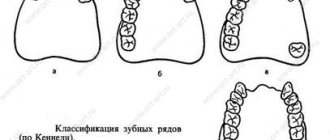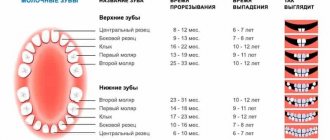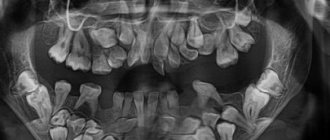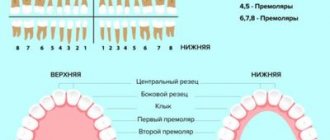Shark jaw, teeth, dentition: how many, how are they arranged and why?
The most important part of a shark's jaw is, of course, the teeth. The shark's teeth are arranged in two rows. Why? The reason is that sharks constantly use their teeth to hunt and crush food. Shark teeth are weapons of attack and defense. Therefore, over the course of its entire life, a shark can lose all its teeth. This is due to the fact that they are weakly attached to the jaw.
Unlike humans, they do not have roots to support them in their depression. Because of this, when a shark bites into meat, the tooth may remain inside the prey due to the stiffness of the fibers. Therefore, the second row of teeth plays the role of spare teeth. If the shark runs out of teeth on the first row, it will be able to use the second and third.
Important fact: a shark's ability to lose its teeth is also a means of self-defense. When a shark hunts, it opens its mouth wide and bites its prey. During this process, a piece of prey may occupy the entire mouth, and the shark will not be able to breathe. And she breathes by swallowing water and extracting oxygen from it. In this case, it is easier for the shark to separate several teeth from the front jaw, release the prey and then attack again. Otherwise, she may lose access to oxygen.
Don't forget about shark diseases, which also damage teeth and lead to their loss. Sharks also have plaque on their teeth that causes caries or tartar. This problem that sharks face is very similar to what happens to human teeth.
Also, the way a shark's teeth are positioned has a direct connection with how oxygen gets inside the shark's lungs. The breathing process of a shark occurs as follows: the shark opens its mouth, water enters it. After this, oxygen is supplied to the shark's lungs through the gills. For this reason, the shark’s mouth should not be completely closed the entire time it is in the water. And the teeth grow so that it is more convenient for the shark to swallow water and extract oxygen from it.
How long does a white shark live?
The average lifespan of a great white shark is estimated at 70 years. Studies based on the study of vertebral growth have made it possible to determine the age of the oldest white shark. It turned out to be a 73-year-old male. However, not everyone manages to live to an old age.
Previously, scientists believed that the predator at the head of the food chain had no natural enemies. But at the end of the last century, reports appeared of attacks on white sharks by killer whales, even larger and more bloodthirsty predators.
Another enemy of the white shark is the saltwater crocodile, which is capable of turning over a large fish and easily tearing its throat or belly.
Water pollution, accidental capture and poaching also reduce the already low numbers of the species. The price of a tooth on the black market is $600-800, and the cost of great white shark jaws reaches $20-50 thousand.
Today, predators are protected by law in many countries, for example, Australia, South Africa, the American states of Florida and California. By the way, Peter Benchley, the author of the famous novel “Jaws,” clearly did not expect the negative consequences of the sensational film adaptation. Therefore, the writer devoted the last 10 years of his life to studying the ocean ecosystem and actively advocated for great white sharks.
How does a shark's jaw work - the structure of a shark's jaw
All sharks existing on earth today have the same jaw structure. Therefore, if you know how the jaw of one species of shark works, you can confidently say that the jaw of another species of shark works as well.
Diagram of the structure of a shark's jaw
Main parts of a shark's jaw:
- Pay attention to the facial, anterior part of the skull (scientifically “visceral”). The jaw arch is attached to it (another name is the “visceral arch”). It consists of two main parts: the palatoquadrate cartilage and the Meckel's cartilage. Ligaments hold, fasten together these two components of the ligament.
- The first cartilage is called palatoquadrate due to its shape and location. It replaces the upper jaw, and the lower cartilage, called Meckel's cartilage, does what the lower jaw does.
- Behind the first arch you will find the hyoid. Its components are three cartilages: one of them is in single quantity, and the other two duplicate each other.
- The first cartilage, the one that does not have a double, is called by scientists the hyomandibular, or pendulosa for short. It moves easily from side to side and is directly attached to the skull in the area of the auditory region using ligaments. At the other, opposite end of the suspension there is a maxillary arch and a hyoid, a paired section of the hyoid arch. How are the hyodes attached to each other? Correct answer: they are attached to each other using cartilage. Also, this same cartilage is attached to the tongue of the shark itself.
An interesting fact about the shark’s tongue: unlike the human tongue, it consists not of muscles, but of two types of tissue: consisting of mucus and what is commonly called connective tissue.
The jaw of sharks is attached to the skull by the upper element of the hyoid arch. This type of attachment of the arch to the brain is called hyostyly.
Types of sharks - photos and brief description of the species
Since there are over 500 species of sharks, differing from each other in their modes of birth, habitat, food preferences, behavior and external differences, each of them has a specific class and name.
Some of these representatives prefer expanses of water and the depths of the sea, while others like to scurry along the coast. Some of them may be indifferent to a person unless he himself shows disrespect for the predator, while others purposefully seek a meeting with him.
Let's look at some of the elasmobranch fishes.
White shark
- the largest and most terrible representative of predatory fish. It ranks first in danger and is considered a human killer.
It lives in all oceans and swims along the coast, where it often attacks people, mistaking them for seals. However, most people die from blood loss and injuries, since she, having felt the bones, instead of the tender meat of the seal, releases her victim.
With a length of 6 meters, its weight reaches 2300 kg.
bearded shark
- being a lover of coral reefs and shallow depths, she is a good master of camouflage, in which she is helped by a flattened body, gray-brown or yellow color with large spots, and hanging fringed processes. The fish can reach 3.5 meters in length.
Hammerhead shark
— likes to circle near the shores of tropical waters. The six-meter aggressive predator often gathers in flocks. It is very dangerous for humans due to its attack.
Angelfish
— the bottom of the Atlantic and Pacific oceans is the habitat of this unusual fish, which received its beautiful name due to its flattened body, similar to the body of a stingray, and wing-shaped fins.
This shark feeds on mollusks and crabs, reacting with lightning speed to its prey and easily grinding its shells.
Whale shark
- the largest existing fish today. Its size reaches 20 meters, this beauty can weigh up to 12 tons.
Its main food source is plankton. And when meeting a person, she prefers to modestly pass by, ignoring him.
Reef shark
- small and graceful, with a thin body and flat head, reaches only 20 kg.
She treats people with great curiosity, and if she is not offended, she is quite peaceful.
Gill arches in a shark's jaw
Without gills, a shark cannot breathe. They are the main reason why oxygen gets inside the shark's lungs. The shark periodically draws water into its slightly open jaws. From here it goes to the gills, and oxygen begins to enter the shark’s lungs. That is why the shark’s jaw is always slightly open, so that if necessary, it can quickly enrich its body with oxygen. And the arrangement of the teeth in the jaw helps it do this as efficiently as possible.
The gills are connected to each other by the attachment of cartilaginous copulas. They are partially fused with each other. Why are gills arranged this way? There is a reason for this.
Before we find out, let’s add one more important fact. The gills of a shark have small processes that are thin and resemble stamens. They are placed so as to be at the same level with each other. For what?
Due to their location, the stamens in the shark's gills, which are attached through cartilage to the jaw, prevent large volumes of food from falling out through the gills. Because of this, the shark can hunt less and immediately digest more food than if some of it fell back into the water through the gills. Thus, we can conclude that gills not only help the shark breathe, but also help save the shark’s energy and time.
Shark gills in shark jaw
Interesting facts about sharks
The eyes of a sea predator are very similar to humans; they also distinguish colors, but have a greater advantage: in opaque water they can see at a distance of up to 15 meters; exceeds cat and human vision several times; captures a change of 45 frames per second, while a person distinguishes 25 frames.
Every year there are reports of attacks by sea hunters on passing ships; up to 10 cases have been recorded.
These hunters are very curious, so they often try inedible objects. When opening the abdominal cavity, various objects are repeatedly discovered.
The white shark lives up to 30 years, and only in the seventh year of its life does it attack people, until that time feeding only on fish. This predator can survive without food for several months. But in captivity, she voluntarily refuses food and dies on the 10th day.
Before attacking, the sea hunter draws circles around his potential victim to understand its weakness.
The structure of a shark's jaw - why is it unique?
A shark's main weapon is its teeth. Even a person who has never read about the structure of a shark’s jaw knows how sharp and dangerous they are. They are located in two rows. The number of teeth reaches ten thousand. And the record holder for the number of teeth is the whale shark. The total number of teeth is fifteen thousand.
Another amazing fact about shark teeth. Scientists have determined that they are scales of their own kind. But sharper and tougher. They include dentitis. However, the roots of shark teeth are very small. The second row of teeth plays the role of spare teeth. If the shark runs out of teeth on its first jaw, it will be able to use others from its second or third jaw.
How will a shark replace a lost tooth if the teeth are nearby and the rest of the teeth on the shark's jaw are still intact? This happens very quickly; the tooth located on the back jaw is automatically forced forward. Because of this, it does not have the same root as a human tooth. Thanks to this, the tooth can easily move and replace the lost one.
Sharks often replace their teeth, either as a preventative measure or due to diseases such as tooth decay. Predators such as tiger sharks replace teeth with entire jaws, and over the entire period of their existence replace tens of thousands of teeth with each other.
The jaw structure of sharks is identical. However, the shape of one shark's teeth is different from the shape of another shark's teeth. For example, a white shark's teeth are rectangular in shape, with smooth edges. To tear apart prey, a white shark only needs one row of sharp, jagged spaces on each tooth. But a more dangerous predator, the tiger shark, has two rows of notches on each tooth.
The record holder for length is the teeth found during excavations and reaching a length of 15 centimeters. They were found to be part of an extinct species of shark called megalodon.
The rate at which some shark teeth replace others depends not only on the circumstances, but also on the species of shark. For example, in representatives of the lemon shark species they change every seven days. And for a great white shark, it takes about 240 days for the teeth to naturally replace each other in the front jaw.
The shape of the teeth always has very sharp edges, with the help of which the shark easily tears apart what gets into its mouth. Due to the structure of its jaw, a shark can bite off and swallow large pieces of meat in a very short time. Although the speed of eating prey in horror films is indeed exaggerated, in nature the shark can also finish off its prey in a very short time.
The number of teeth may vary among sharks of the same species, but of different ages. As the number of years lived increases, the number of teeth also increases. Also, shark teeth often suffer from collisions with boards, paddles, surfboards and boats.
The shark's diet consists of large marine animals such as seals and fur seals. Their skin is very tough and sometimes you need to give up several of your teeth to bite through it. Sharks chose these animals as their prey precisely because their bodies contain large amounts of fat. And sharks need fat for large reserves of energy, which will give them the ability to move quickly, maintain the body temperature necessary for life and get their own food.
The shark's jaw is designed so that the shark can survive and feed itself
Thus, we can conclude that the structure of a shark’s jaw and the location of its teeth is formed due to many factors such as: prey, the need for fast movement, the need to obtain oxygen from the water and swim with its mouth slightly open, the presence of dental diseases and, most importantly, constant use teeth and the need to replace lost ones.
Read about cases of shark attacks on humans in the article:
- The most dangerous killer sharks for humans: top 10 list, description, photo
- Are there sharks in the Black Sea?
Reproduction of white sharks
Reproductive maturity of white sharks occurs late, when the fish reach their maximum size. Females mature at the age of 33 years, males are ready to breed at 26 years.
These predators do not survive in captivity, so research on their mating behavior and reproduction contains very little information.
Great white sharks are ovoviviparous fish. This means that fertilized eggs remain in the mother's oviducts. They hatch into embryos that feed on the eggs produced by the ovaries. A pregnant female carries on average 5-10 embryos, but theoretically a litter can contain from 2 to 14 cubs. During the early and intermediate stages, the hatchlings' bellies are very distended and filled with yolk, and when egg production stops, the fetus digests the nutrient reserves.
The exact timing of gestation in white sharks is unknown, but scientists believe that pregnancy lasts more than 12 months. The baby sharks are born fully developed, 1.2 to 1.5 m long, and ready to live independently.
How does the White Death hunt?
The teeth of the great white shark are triangular in shape and equipped with sharp sawtooth serrations along the edges. This structure determines the way these dangerous fish hunt. The shark grabs the victim and tears off pieces of flesh, moving its head from side to side, as if “sawing” the meat.
A white shark usually attacks from below, so that the victim does not have the opportunity to see the predator until the last second.
The shark's main food source is seals and fur seals, whose bodies have a lot of fatty tissue. And white sharks need fat to maintain a high body temperature.
Tail
A shark's tail consists of a caudal stalk and a caudal fin, which are the main source of a shark's strength. The shape of the tail fin depends on the shark’s lifestyle and is divided into five categories:
- Fast-swimming sharks, such as mackerel sharks, have a crescent-shaped tail with almost equal upper and lower lobes. A large tail extension increases efficiency and gives power to the movement. These species usually have additional lateral carinae on the caudal peduncle. The exception is the whale shark and basking shark, they have the same type of tail, but they lead a quiet lifestyle.
- Gray sharks have a tail whose upper part is longer than the lower part. The top blade is angled upwards relative to the hull, this balances cruising speed and allows sharks to roll over. Thresher sharks use this tail to stun their prey.
- Bottom-dwelling sharks, such as catsharks and carpet sharks, have a tail with a long upper blade, but they lack the lower one. The top is positioned at a low angle, which gives them maneuverability but makes them slow. the movement of these sharks resembles the movement of an eel.
- Dog sharks have a tail with longer upper blades. They cannot reach high speeds, but are capable of sudden high-speed bursts with high maneuverability.
- Angel sharks have heterocercal caudal fins in which the lower lobe is larger than the upper one.
We recommend reading: How much do sharks weigh and how long are they?
Why do sharks have so many teeth?
There are several reasons for this:
- peculiarity of breathing - if a predator gets into the mouth of a victim in which the teeth are stuck and it is not possible to free them quickly, the shark may suffocate. Therefore, stuck teeth fall out easily;
- tooth structure - shark teeth have no roots at all, so they quickly and easily fall out if necessary, and the teeth of the next row move in their place;
- Sharks don’t go to the dentist - if their teeth become dull or start to deteriorate from bacteria, they just need to be replaced with “fresh” ones.
It is noteworthy that predators use only one row of incisors; the remaining rows are strongly inclined to the side so as not to interfere with the swallowing of food.
Shark teeth in children what to do
Children's baby teeth fall out and are replaced by permanent teeth. In rare cases, the first ones do not have time to fall out, but the second ones already grow nearby. This phenomenon received a specific name – “shark teeth”. Parents are always concerned about the question of what to do in such a situation.
Pathology mainly appears during the eruption of the lower central incisors. Less commonly, this happens with the growth of the upper incisors or molars.
Why is it dangerous?
Despite the unattractive appearance of such a smile, there is no need to worry. Most often, dentists advise not to take any action. The root of the baby tooth softens, and the tooth falls out on its own after a certain period of time. The child facilitates this by loosening the tooth with his tongue or hands.
Sometimes there are situations when the root is too strong. If the process takes too long, you can go to the dentist to remove the unnecessary vestige.
After the manipulation, the permanent tooth will gradually move to the place of the removed one and become attached to it. The tongue is a very powerful muscle.
Under its pressure, the dentition is properly aligned in about a month. No additional equipment or effort is required.
In what cases should you consult a doctor?
If the process is accompanied by unpleasant sensations and the child constantly complains, then you should not delay a visit to a specialist. It is recommended to consult a doctor in the following cases:
- The baby tooth does not fall out within three months after the permanent one appears;
- an inflammatory process develops;
- The baby tooth is very loose, causing anxiety and discomfort to the child.
Possible consequences
Parallel rows of teeth sometimes lead to negative consequences. Among them:
- formation of diastemas;
- altered bite;
- poor chewing of food and subsequent disruption of digestive processes;
- broken diction.
Diastema - gap between teeth
The importance of proper breathing
Nasal breathing helps the jaws develop anatomically correctly. If you breathe through your mouth, there is a high risk of their underdevelopment. This fact can easily be explained by the fact that the tongue plays an important role in the formation of the jaws.
In the first case, he takes the desired position. In the second case, the tongue is located at the bottom of the oral cavity and practically does not come into contact with the elements of the jaw arches.
They do not develop properly and there is not enough space for permanent teeth.
The parents' job is to closely monitor their child's breathing. If nasal breathing is impaired during colds, a quick solution to the problem is required.
Prevention
There is no such prevention that guarantees 100% prevention of anomalies in children. But there are several rules to help reduce risks. Here is their list
- Establishing proper nutrition with sufficient amounts of all vitamins and microelements. There should be solid foods that train the dentofacial apparatus.
- Timely treatment of oral diseases. Carious processes often lead to disruption of the development of the dental system.
- Correct nasal breathing.
- Regular visits to the dentist for preventive examinations and identification of possible problems.
If, when shark teeth appear in a child, the doctor advises removing a temporary tooth, do not be afraid of this. Modern dentists perform this procedure only when indicated and absolutely painlessly.
Habitats
To the question: “where are sharks found?”, one can answer this way: individuals of this species live mainly in the ocean. The predator is found in many regions except the Arctic Ocean. In some places, such as New Zealand, white sharks are critically endangered and protected by law. Thanks to migration, it is possible to identify the places where sharks live:
- Off the coast of Australia;
- Seychelles;
- Madagascar;
- Africa;
- Mauritius.
Basically, you can understand where sharks are found by following the route of their main migration in search of food. Also a factor for large concentrations of sharks are those places where conditions are favorable for reproduction.
The habitats depend on what the shark eats. If there are large concentrations of fish, seals, small species of sharks, sea lions and other representatives of the ocean, then sharks live in these regions, and many other predators can be found. These include tiger and white sharks and killer whales.
Where do sharks live?
Sharks live in the waters of the entire world's oceans, that is, in all seas and oceans. The main distribution occurs in equatorial and near-equatorial sea waters, near coastal waters, especially in reef areas.
It is worth noting that some species of sharks, such as the common gray shark and the common shark, are able to live in both salt and fresh water, swimming into rivers. The depth of habitat of sharks is on average 2000 meters, in rare cases they descend to 3000 meters.
What is the most dangerous shark for humans?
10 most dangerous sharks
- Blunt shark
or
bull
shark. - Great white shark
. - Tiger shark
. - The shark
is mako or blue-gray. Capable of reaching speeds of up to 60 km/h and jumping up to 6 meters above water. ... - Longtip shark
. ... - Gray reef shark
. ... - Hammerhead
shark. ... - Sand shark
.
All the power is in the teeth!
Each type of shark is armed with the number of teeth it needs to survive. Over the course of 10 years of life, large species of sharks change about 24 thousand teeth!
It is interesting that in embryonic sharks, the teeth on the surface of the skin and the teeth in the mouth are completely identical, changing just before the birth of the shark.
The number of teeth in a newborn shark is almost identical to the number of teeth of its older relatives - teeth are extremely necessary for hunting, rapid growth and muscle mass gain: in the ocean community everything is very simple - whoever grows faster has a better chance of surviving.
By the way, teeth are all that remains after the death of a shark. Its body does not contain bones, only cartilage, so it is completely eaten by bottom-dwelling scavengers, and what is not eaten decomposes without a trace.











